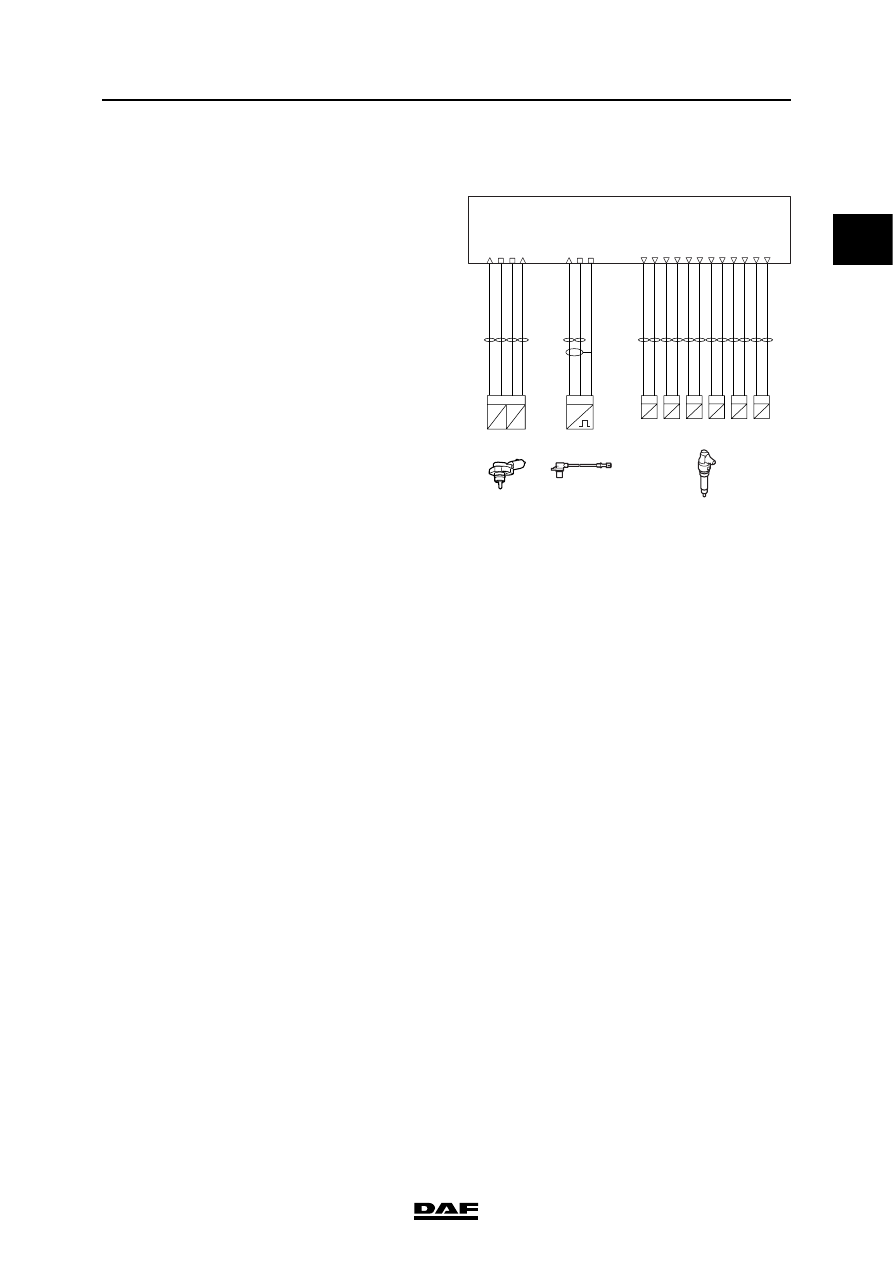DAF XF105. Manual - part 100

1
©
200528
3-19
Control functions
DMCI ENGINE MANAGEMENT SYSTEM
XF105 series
3.10 SMOKE LIMITATION
This function ensures that emissions of black
smoke are kept to a minimum level. The fuel-air
ratio is responsible for the development of
smoke. The DMCI electronic unit calculates
smoke limiting on the basis of the inlet air
pressure (F649, pin A34) that is compensated by
the inlet air temperature (F649, pin A30). To
calculate the mass of the intake air, the electronic
unit requires the inlet air temperature, the inlet air
pressure and the intake air volume. The latter can
be calculated on the basis of the cubic capacity
and the speed of the engine. When the intake air
mass has been calculated, the electronic unit can
determine the maximum amount of fuel that can
be injected to prevent excessive development of
smoke.
If the inlet air boost pressure signal is absent or is
not correct, the electronic unit carries out
calculations using an air mass table based on the
engine speed (F552).
Relevant components
-
Charge boost pressure and temperature
sensor (F649)
-
Crankshaft sensor (F552)
-
Injectors (B421 to B426)
i401000
D965
1 2
high-side
low-side
Cyl.6
B426
1 2
high-side
low-side
Cyl.5
B425
1 2
high-side
low-side
Cyl.4
B424
1 2
high-side
low-side
Cyl.3
B423
1 2
high-side
low-side
Cyl.2
B422
1 2
high-side
low-side
Cyl.1
Injectors
B421
temp.
F649
T
R
P
U
2 1
signal
ground
3 4
supply 5V
signal
inlet
pres.
boost
N
2 1
signal
return
shield
3
F552
speed
crankshaft
A2
A8
A9
A22
A21
A14
A5
A18
A13
A1
A10
A17
A34
A27
A28
A30
A49
A50
A60